Ladybugs are one of the many beneficial insects that can be found in a garden, orchard, or patio. It is not that it is especially popular for pollinating flowers, but it is one of the best allies that any gardener can have who grows his plants following the principles of organic farming.
Ladybugs Habits, and Biology
Ladybugs can live on any of the continents and live close to their prey, that is, where plants, herbs, shrubs, trees or lawns abound. They like warmer climates and in winter, they hide to avoid the cold under bark or rocks.
All the larvae of the different species of ladybugs hatch from eggs normally deposited in groups and attached to the leaves of grasses and trees. They are usually oval in shape and orange or yellow in color. Since most ladybugs feed on aphids and not on plants or vegetables, we can say that ladybugs are a natural insecticide. They eliminate harmful aphids without the need to put poisons in the garden. In fact, in some places, ladybugs are accustomed to controlling aphid or mite pests. It is said that a single ladybug can eat up to 1,000 preys during summer, making them very valuable as biological control. On crops heavily affected by aphids, ladybugs can be released and simply allowed to feed on them. Ladybugs are important for ecological balance. If they can keep aphids at bay, it is not necessary to use poisonous insecticides. Although they are safe for humans, they can be harmful to other kinds of insects or the birds that eat them. In addition, ladybugs help maintain food chains without risk.
These friendly beetles are independent animals. That is, they are solitary animals that spend the day looking for food alone. Regarding reproduction, a single ladybug can emanate up to 400 eggs in each laying, which hatch between March and April. It is common for them to be left on the leaves of plants that have aphids since the larvae begin to feed before becoming adults. The complete cycle of a ladybug lasts two months, and when winter comes they go back to hibernate.
On the other hand, ladybugs are independent, but they gather in large groups to hibernate because by gathering several to spend the winter, they protect themselves from the cold. In addition, since they are all gathered, when they wake up in early spring, it is easier to mate and thus reproduce.
Do Ladybugs Eat Dirt?
Ladybugs do not consume dirt because they are predators and only eat things like aphids. They are small in structure and live on flowers and plants.
For that reason, they have a huge population and show an increase, especially in the springtime. Both the larvae and adult stages have the ladybugs eating other insects. They are carnivorous insects and dirt cannot part of their diet.
What Do Ladybugs Like to Eat Most?
Ladybugs are predominantly predatory at the expense of insects and mites. Ladybugs are carnivorous and opportunistic, and a single species can hunt a wide variety of insects.
There are records of some species that consume more than 60 types of aphids. The fertility of coccinellids is quite high, but it strictly depends on the degree of infestation of their prey.
That is, they reproduce when the prey has a growing population and, on the other hand, they can hibernate when the prey’s activity is less.
These insects are highly valued, especially in the agricultural sector, as natural predators of many parasites, such as some species of:
- Mealybugs
- Aphids
- Ants
- Ticks
- Mites
- Flies
- Plant Lice
- Leafhopper
Some species may also feed on other insects. In fact, there has been a lot of talk about whether ladybugs eat ants, and the truth is that they only feed on a few very specific species.
For ladybugs, the search for prey is very active and characterized by extraordinary mobility. This behavior favors the settlement of Coccinellidi precisely in the places where the infestations are more intense.
These insects are very active at the beginning of spring. They target the herbaceous plants that harbor the first infestations of aphids, moving on to the arboreal crops.
In summer, they can go through a period of stasis due to the high mortality that falls on aphids, but in late summer, they move to spontaneous vegetation where they can find replacement hosts.
There are some types of ladybugs, such as those of the Epilachninae subfamily, which are herbivores. They can feed on:
- Leaves
- Fruits
- Seeds
- Lettuce
- Fungi
- Mildew
- Nectar
- Pollen
The ladybug spends much of the day feeding and its presence can also be used as an indicator of possible pests because this suggests that its food source also lives in the same ecosystem, which could be harmful to some types of crops.
These intrepid insects are also usually hunted by some larger birds, frogs, and other insects. It is for this reason that the ladybug has developed a type of substance that makes it an unappetizing food, thus maintaining a survival rate quite favorable. For the most part, the ladybug larvae eat pollen, mushrooms, and nectar to supplement their diet. When a ladybug is in the larval stage, it begins to feed on aphids. It is estimated that in a single summer one of these small insects can devour up to a thousand aphids, although the larvae of the last stages are the most voracious..
Females usually lay eggs near insect colonies, so that they have their food nearby as soon as the larvae hatch. Such is their voracity that the newly hatched larvae feed on their own egg, and even eat unhatched eggs before they start feeding on insects. Not all ladybugs are predators of crop pests and are therefore beneficial for agriculture. Members of the Epilachninae subfamily feed on leaves, grains, or seeds of various crops, from the Solanaceae families (potato, tomato, chili, pepper, or eggplant) and Cucurbitaceae (pumpkin, zucchini, melon, cucumber, etc.) and also from plants of other families, such as Fabaceae (legumes) or Poaceae (corn).
Food Avoid to Feed
Do not feed your ladybugs large insects. It is best to give them smaller insects, so they can handle the consumption process. Be sure that they feed on insects with softer bodies. It is not a good idea to leave water standing around or in a container for ladybugs to drink. It is better to put the water on a paper towel, sponge, or cotton ball. If not, the ladybug will get drenched in the water. Ladybugs will consume the eggs of other insects, but only if those eggs are soft, nutritious, and easily available. The ladybug wouldn’t be able to eat the Potato beetle. However, the eggs from the Corn Borer would be the ideal treat as well as eggs from other ladybugs. Moth eggs are nutritional for ladybugs, but only if they are small in size and soft in texture.
While there is a lot of butterflies around, not every one of them can be eaten by ladybugs. Some of them hatch larger eggs than others do. Some butterflies can sting while others are spiny. These are defenses that the ladybug may not be able to overcome for a desirable feeding.
Ladybugs do not normally feed on vegetables and that is why they can be such a benefit in your garden by getting rid of harmful insects. When you keep them as pets, they are known to eat cucumbers, but not regularly and only as a diet supplement and only if, their normal foods are unavailable. If you were to feed ladybugs too much fruit and veggies, they would become pests.
Therefore, you would keep these foods from ladybugs:
- Apples
- Cabbage
- Mangoes
- Celery
- Strawberries
- String beans
In addition, ladybugs should avoid acidic foods in their diet as much as possible. Ladybugs are not known to eat paper, fabric, or any other items around the household.
Tips to Feed Ladybugs
Look for plants infested with aphids. It is so easy to turn the leaves and observe black or yellow spots on the underside, which are aphids. Pluck off these infested leaves or stems and feed them directly. This option has a drawback and that is that the aphids feed on the sap of the plant. If the plant stops receiving water, there is no sap, and the aphid ends up dying after 2 or 3 days.
Find the same aphid-infested plants, cut off a shoot with several leaves and place it in the “mariquitarium” with a supply of water like a small and simple homemade hydroponic. It will be enough to take a small container and fill it with water, place a napkin at the end, as a stopper to keep it moist and finally puncture that sprout on the napkin. In this way, the sprout will be in contact with the water and the aphids will be able to continue sucking the sap from the leaves, and they will last more days than otherwise, although it all depends on the number of aphids and the number of leaves.
However, not only do ladybugs live on aphids. If you are in a hurry or some week you have not managed to find aphids, you can always feed your ladybugs with sugar, honey, or nectar. For this, simply take the cap of a bottle and put a few pieces of paper or a hand towel soaked in water with honey. This will last a few more days until you find fresh aphids.
FAQ
1. What do ladybugs eat besides aphids?
Most ladybugs eat aphids, but not all of them do. Some eat insects such as spider mites, mealybugs, and Corn Borer eggs.
2. What do ladybugs eat in the house?
In the house, ladybugs can eat a number of things, including raisins dampened in water as well as fruits non-acidic in nature.
3. What do ladybugs eat besides bugs?
While ladybugs like to eat bugs, they also love small insects such as white flies and mites, which are harmful to plants.
4. What do ladybugs eat in the garden?
It all depends on the kind of ladybug, but most provide benefit to a garden, in that, they help to get rid of annoying pests. They will eat plants, which contain pollen.
5. What do ladybugs eat and drink?
Ladybugs drink water, but not a lot of it. They drink enough to provide hydration, even though, most of their water comes from foods with moisture.
6. What do ladybugs eat for food?
Most ladybugs are plant-eating species and are known for eating aphids as a way to aid in protecting crops.
7. What do ladybugs eat in the winter?
In the winter, ladybugs hibernate, but their main diet is still aphids. Some may live off their body fats to survive during the cold months.
8. What do ladybugs love to eat?
The official diet of ladybugs is aphids. For that reason, they are considered best friends to gardeners. Ladybugs, also love to eat scale insects and any other plant pests.
9. What do ladybugs eat as fruit?
Ladybugs eat fruits high in sugar, but with no acidity. These include grapes, figs, bananas, papaya, and dates.
10. What do ladybugs eat as a pet?
As pets, ladybugs eat raisins moistened with water and sweet fruit. For treats, you can add jelly or honey to their fruit.
Summary
There is a wide range of ladybug species, but not all of them consume the same foods. Some eat insects like aphids, and bed bugs while others are vegetarians and feed on plants.
Some people have ladybugs as pets and feed them on fruits, non-acidic in nature. You must be aware of the right kinds of foods to feed to your ladybug, so it can live a full life.
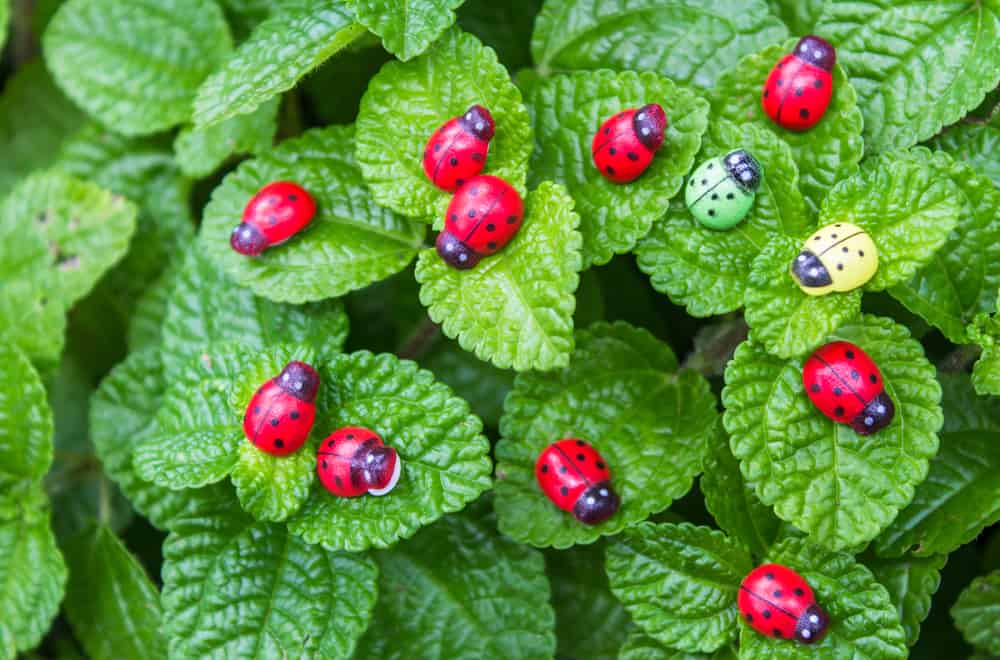
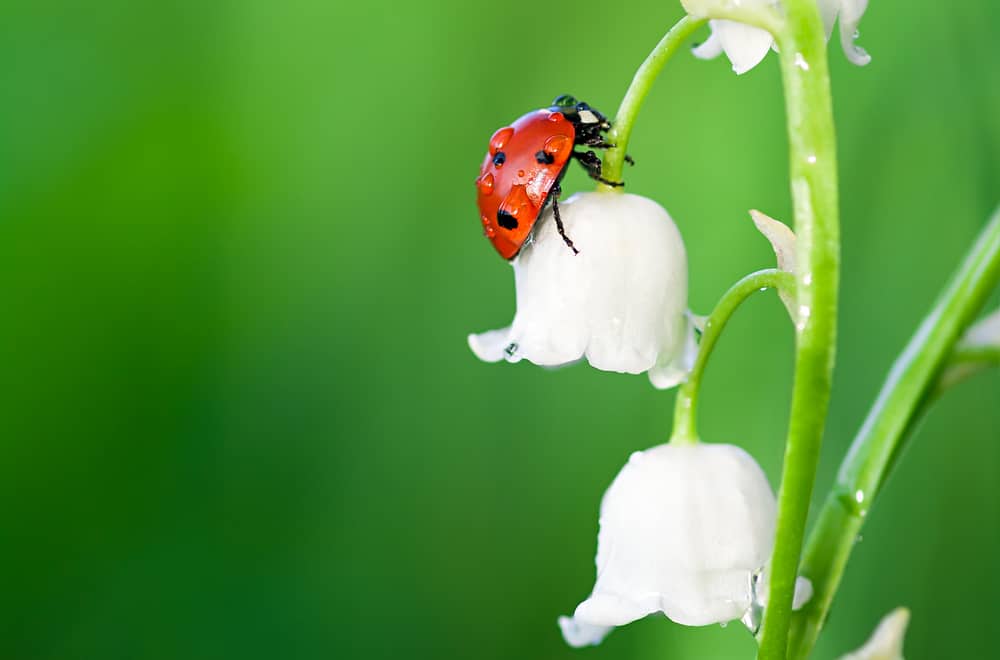
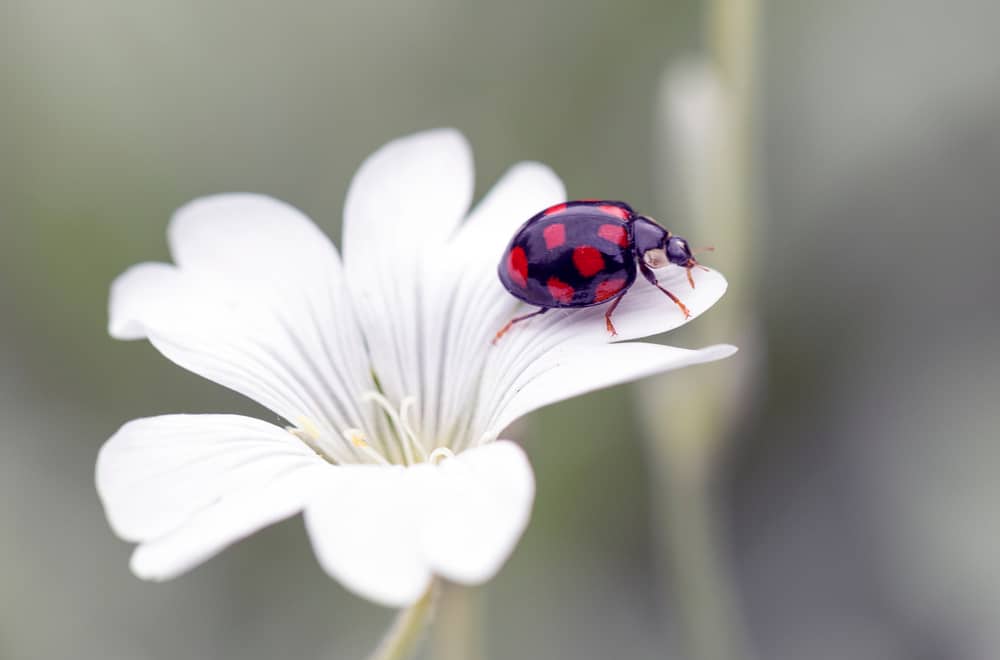
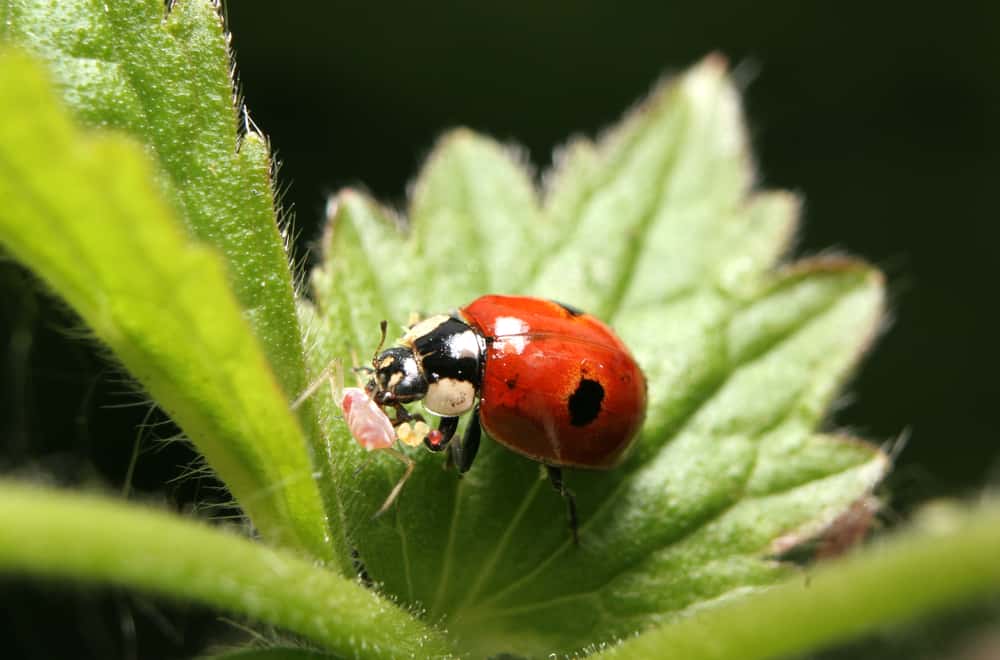
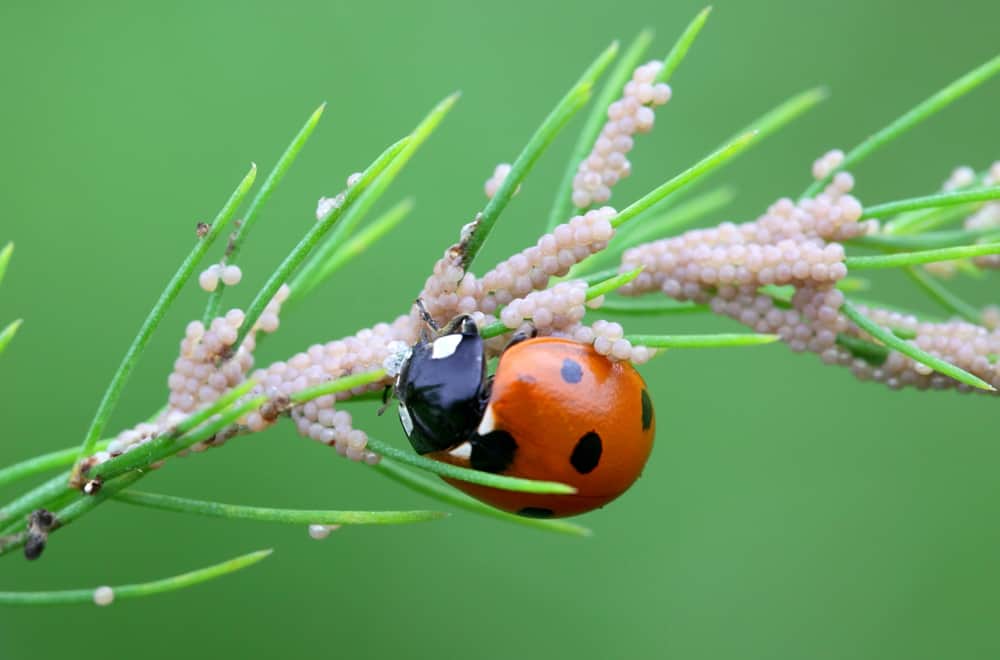
Thank you for the info. I have an infestation of ladybugs that I assume are hibernating since today is December 26th. I need to find out how to tell the difference between a hibernating ladybug and a dead one. In the past, I’m afraid I’ve sucked them up in the vacuum…..and they could’ve still been alive! Ugh! I feel so bad! This year, I’m going to feed them until they wake back up for spring.
I have over 200 plants in my house, so I intentionally keep ladybugs to feed on the pests that are somehow always find their way in. 90% of the time when I find ladybugs laying on their backs on the ground they are just sleeping/hibernating. I usually just pick them up gently with a piece of paper and put them back in the soil of one of my plants.
I have over 200 plants in my house, so I intentionally keep ladybugs to feed on the pests that are somehow always find their way in. 90% of the time when I find ladybugs laying on their backs on the ground they are just sleeping/hibernating. I usually just pick them up gently with a piece of paper and put them back in the soil of one of my plants.